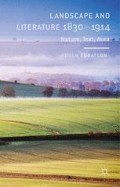Abstract
The political or epochal decay prognosticated in C. F. G. Masterman’s Edwardian vision uncannily echoes a mysteriously resonant episode in Hardy’s Far From the Madding Crowd (1874), a novel aptly characterised by an early review as progressing ‘in a succession of sensation scenes’.2In this scene, Bathsheba Everdene, having opened Fanny Robin’s coffin and discovered the dead baby, flees from her farmstead, ‘neither knowing nor caring about the direction or issue of her flight’.3 Lying down upon ‘a brake of fern, now withering fast’, she can ‘think of nothing better to do with her palpitating self than to go in here and hide’ (FMC, 295). After giving way to a fitful sleep, at dawn she awakes to fuller consciousness of her surroundings, discovering that ‘the ground sloped downwards to a hollow, in which was a species of swamp, dotted with fungi’. The general aspect of the swamp, the narrator notes, was ‘malignant’:
From its moist and poisonous coat seemed to be exhaled the essences of evil things in the earth and in the waters under the earth. The fungi grew in all manner of positions from rotting leaves and tree stumps, some exhibiting to her listless gaze their clammy tops, others their oozing gills. Some were marked with great splotches, red as arterial blood — others were saffron yellow, and others tall and attenuated with stems like macaroni. Some were leathery and of richest browns. The hollow seemed a nursery of pestilences small and great, in the immediate neighbourhood of comfort and health, and Bathsheba arose with a tremor at the thought of having passed the night on the brink of so dismal a place. (FMC, 296)
Access this chapter
Tax calculation will be finalised at checkout
Purchases are for personal use only
Preview
Unable to display preview. Download preview PDF.
Notes
C. F. G. Masterman, From the Abyss (1902), cited in Peter Keating, ed., Into Unknown England, 1866-1913 (Manchester: Manchester University Press, 1976), 241.
Thomas Hardy, Far From the Madding Crowd, ed. S. Falck-Yi (Oxford: Oxford University Press, 2002), 295. Subsequently cited as FMC.
Galia Ofek, Representations of Hair in Victorian Literature and Culture (Farnham: Ashgate, 2009), 136, 137.
Rod Giblett, Postmodern Wetlands (Edinburgh: Edinburgh University Press, 1996), 209.
Regenia Gagnier, Individualism, Decadence and Globalisation (Basingstoke: Palgrave, 2010), 72, 73.
Gilles Deleuze, Essays Critical and Clinical, tr. D. W. Smith and M. Greco (Minneapolis: University of Minnesota Press, 1997), 22.
Linda M. Shires, ‘Narrative, Gender, and Power in Far From the Madding Crowd’, in The Sense of Sex, ed. M. Higonnet (Chicago: University of Illinois Press, 1993), 49.
Friedrich Nietzsche, Human, All Too Human, tr. R. J. Hollingdale (Cambridge: Cambridge University Press, 1986), 212.
Charles Dickens, Martin Chuzzlewit (1844), ed. P. N. Furbank (Harmondsworth: Penguin, 1968), 442.
Richard Jefferies, After London (Oxford: Oxford University Press, 1980), 37.
William Morris, The Sundering Flood (Brighton: Unicorn, 1973), 122–3.
Arthur Conan Doyle, The Hound of the Baskervilles, ed. W. W. Robson (Oxford: Oxford University Press, 1998), 67.
John Bunyan, Pilgrim’s Progress (New York: Signet Classics, 1964), 23.
Walter Benjamin, ‘Franz Kafka’, in Illuminations, tr. H. Zohn (London: Pimlico, 1999), 126, 127.
Walter Benjamin, ‘Johann Jacob Bachofen’, in Selected Writings, vol. 3, ed. H. Eiland and M. W Jennings (Cambridge, MA: Belknap Press, 2006), 17.
T. W. Adorno, Negative Dialectics, tr. E. B. Ashton (London: Routledge & Kegan Paul, 1973), 262.
T. W Adorno, Minima Moralia, tr. E. F. N. Jephcott (London: Verso, 2005), 30–1.
Author information
Authors and Affiliations
Copyright information
© 2013 Roger Ebbatson
About this chapter
Cite this chapter
Ebbatson, R. (2013). Far From the Madding Crowd: Swampy Decomposition and Female Individualism. In: Landscape and Literature 1830–1914. Palgrave Macmillan, London. https://doi.org/10.1057/9781137330444_7
Download citation
DOI: https://doi.org/10.1057/9781137330444_7
Publisher Name: Palgrave Macmillan, London
Print ISBN: 978-1-349-46102-8
Online ISBN: 978-1-137-33044-4
eBook Packages: Palgrave Literature CollectionLiterature, Cultural and Media Studies (R0)

